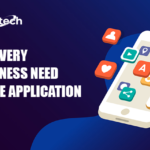How can you build an app that will meet every requirement of users in California and that can easily compete with California’s emerging technologies? Developing such an app requires strategy and technology integration. To build a successful mobile application development in California, you need to understand the audience, use tools, and technologies, and understand the emerging trends. Fameitech excels in mobile application development California, crafting innovative and user-centric solutions that empower businesses across the state to thrive in the ever-evolving digital market. let’s explore the mobile app development world in California
What is a Mobile App
A mobile app is software built for portable devices such as smartphones and tablets is known as a mobile app.
Tools and Technologies in Mobile App Development
Let’s find out some important tools and technologies to build an effective mobile application development in California.
- Integrated Development Environments (IDEs)
This is a basic software you need to build your app for your business in California, its purpose is to simplify the app development process. Xcode and Android Studio are two examples.
- Programming Languages
To develop an effective and functional mobile application development in California you need to use programming languages in their creation. For iOS, common languages are Swift and Objective-C; for Android, common languages are Java or Kotlin.
- Frameworks and Libraries
Frameworks and libraries are features that provide pre-written code. They will speed up your mobile app development process in California. React Native for cross-platform programming and UIKit for iOS are two examples.
Understanding the Process of App Development
1. Brainstorming
Your first development will be brainstorming and planning goals and features of your mobile app according to the California environment.
2. Create and Model
Design and prototyping are important parts as they improve visual and interactive parts, providing a user-friendly experience, and coordinating development with customer tastes and expectations.
3. Development
It is the most vital step to develop the app by writing the app code, the implementation features, and shaping its structure of functionality.
4. Testing
To provide your California audience with a perfect user experience, you need to test your app’s functionality, usability, and performance. You will find many flaws and you can correct them before the distribution process.
5. Implementation
The last and final step is deployment, which will make your application available for California customers. Now users can use the app through app stores, ensuring an easy launch and reachability for the target audience.
Importance of User Experience (UX) and User Interface
(UI) Design in Mobile Apps
A visually appealing and easily accessible interface app will always attract customers, which will increase in number of satisfied customers. This will be possible by user experience (UX) and user interface (UI) design.
New Development Trends for Mobile Apps
To understand the mobile application development world in California, you need to understand new development trends.
- Augmented Reality (AR) and Virtual Reality (VR)
By fusing digital and physical features, augmented reality (AR) and virtual reality (VR) improve engagement and change how users experience mobile apps.
- Internet of Things (IoT) Integration
Through the Internet of Things (IoT) and by combining mobile apps and smart technologies you can provide smooth control and monitoring, improving user clarity and automation.
- Artificial Intelligence (AI) and Machine Learning (ML)
Mobile apps can now function intelligently thanks to machine learning and artificial intelligence. These technologies can easily do speech recognition to design suggestions, improve user experiences, accelerate procedures, and enable adaptable functionalities. This has changed the way mobile application development california understands and responds to user demands.
- 5G Technology
Speed is a feature that every customer on the internet desires. 5G can provide better speed and lower latency to your website, satisfying a wide range of customers
Challenges in Mobile App Development
- Dividing and combining is challenging to ensure reliable functioning on a variety of devices due to issues.
- Protecting user privacy and information is challenging.
- User engagement and loyalty are key factors in app success. To maintain user interest, it needs unique offerings, frequent updates, and effective communication.
Conclusion
Developing a successful mobile application development in California requires a strategy that includes understanding the audience, using the right tools and technologies, and staying up to date with emerging trends. The app development process involves brainstorming, designing, coding, testing, and deployment. Creating a visually appealing and user-friendly interface is important, and integrating emerging technologies such as AR/VR, IoT, AI/ML, and 5G can improve engagement and functionality. Challenges include ensuring reliable functioning on various devices and protecting user privacy.








